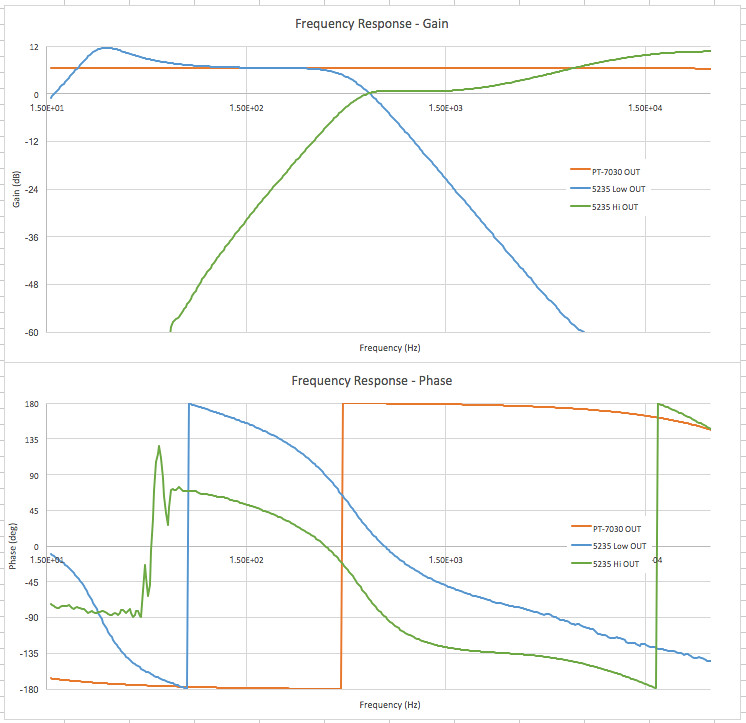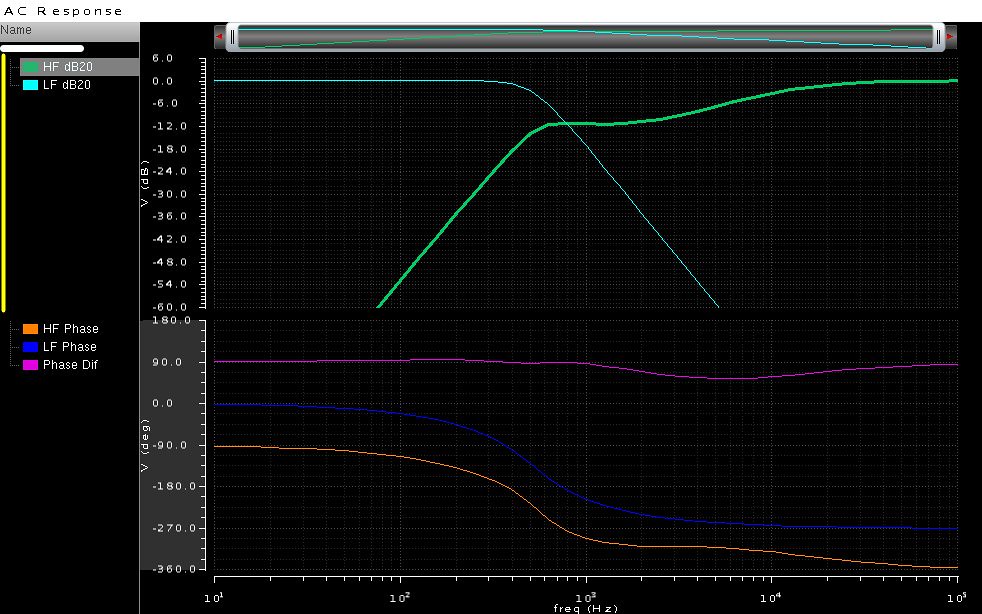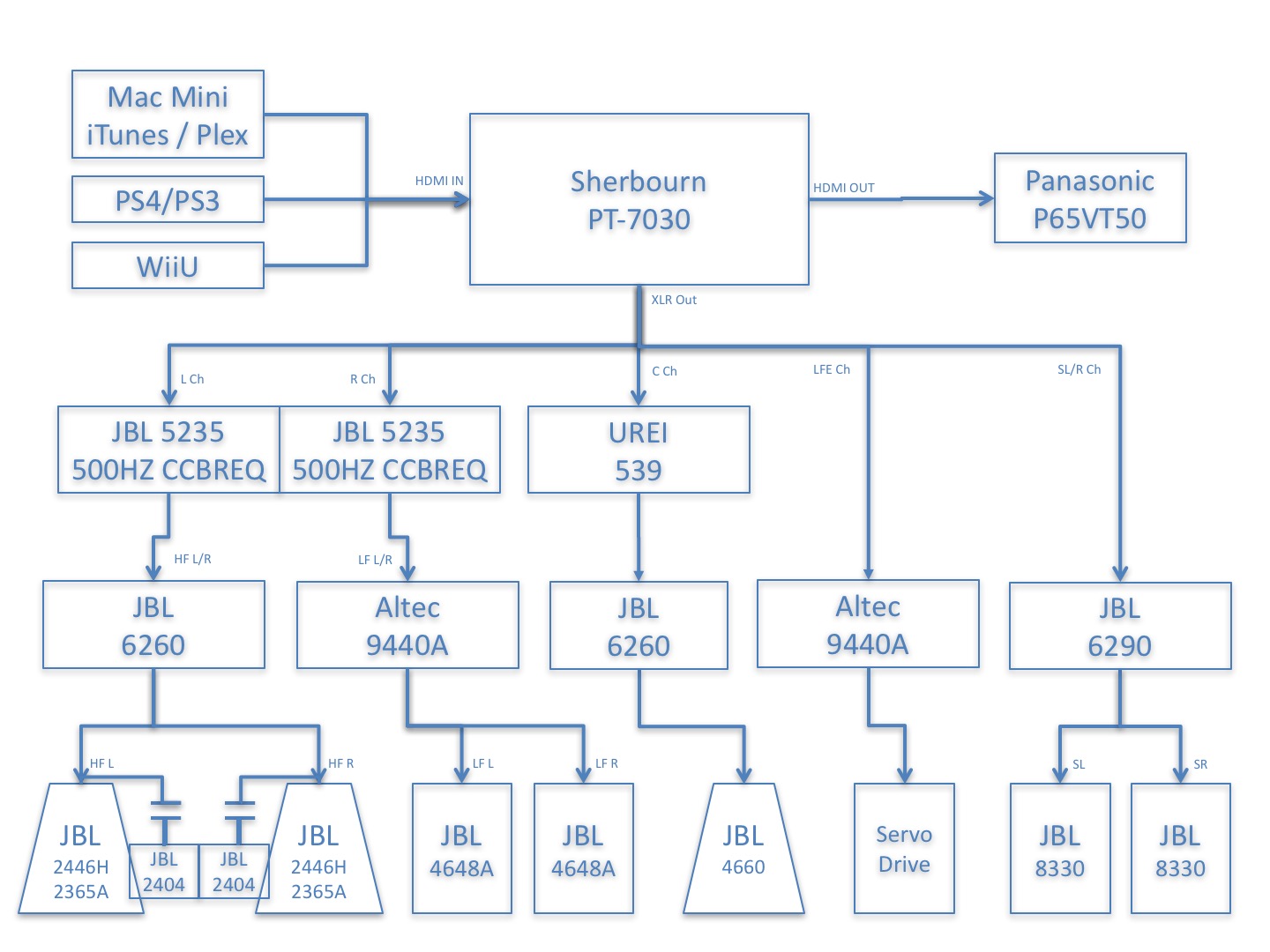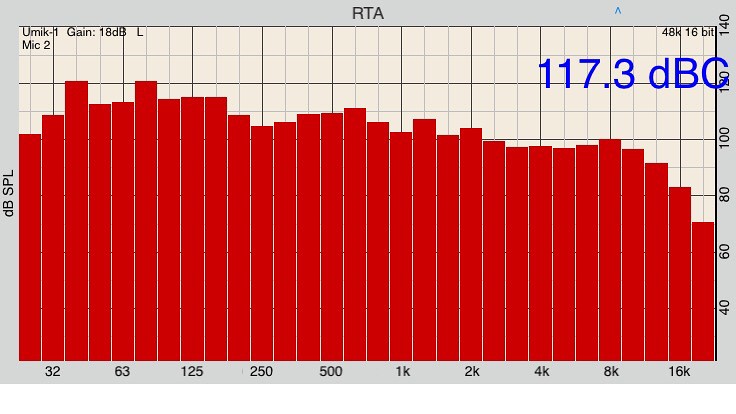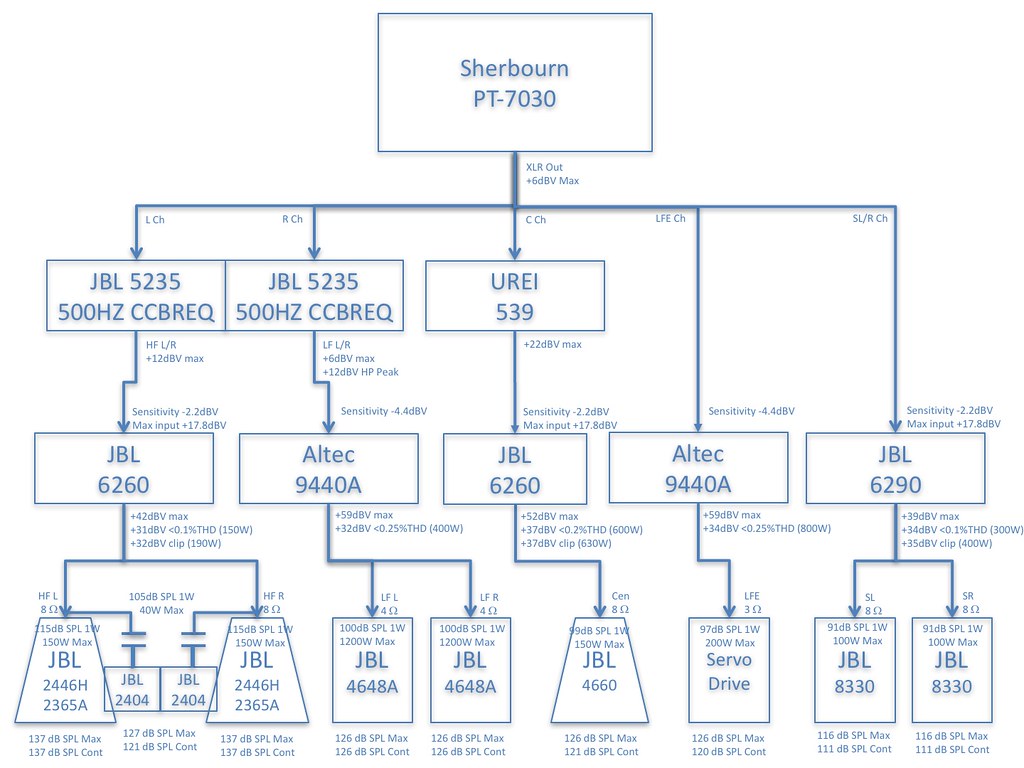miscrms00
Active Member
The adventure continues....
http://www.audiokarma.org/forums/in...ankenstein-monster-system-on-a-budget.677257/
Brief recap, took the plunge and bought up all the old speakers from a local concert hall when the opportunity came along.
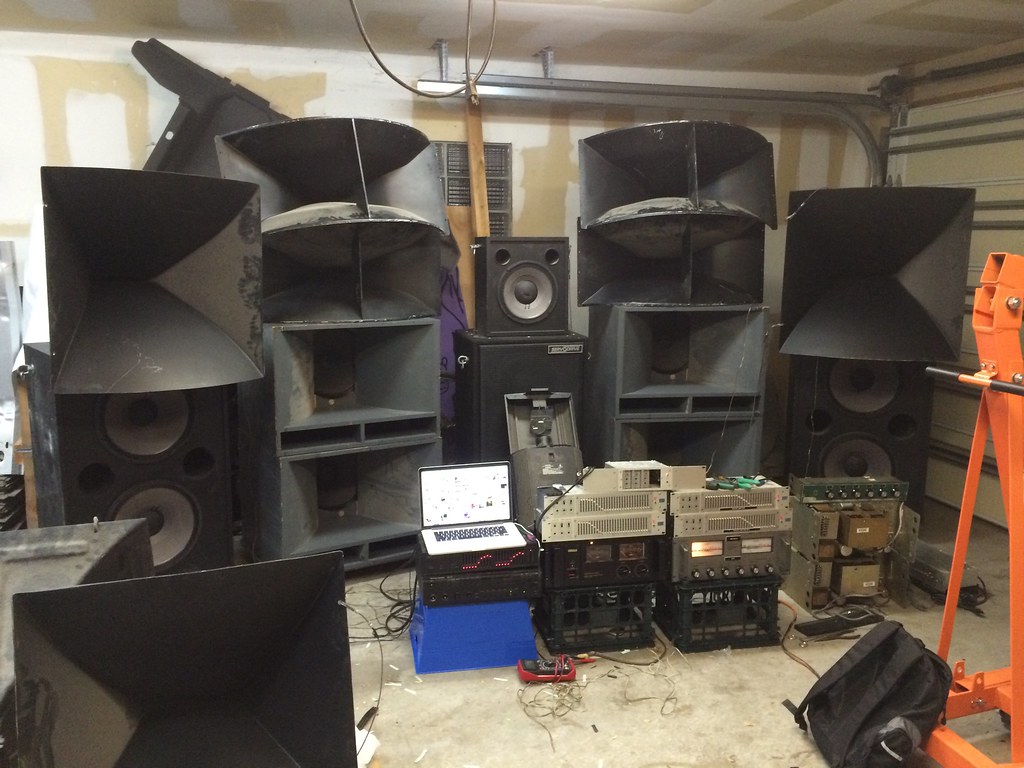
Ended up with a functional and enjoyable setup, but knew it would ultimately be temporary while tracking down the gear required to take it to the next level.

Coming up on two years now of trading, selling, scrounging, and repairing gear, I'm finally starting to assemble the next generation. This will likely involve some experimentation and testing, but excited to be getting started!
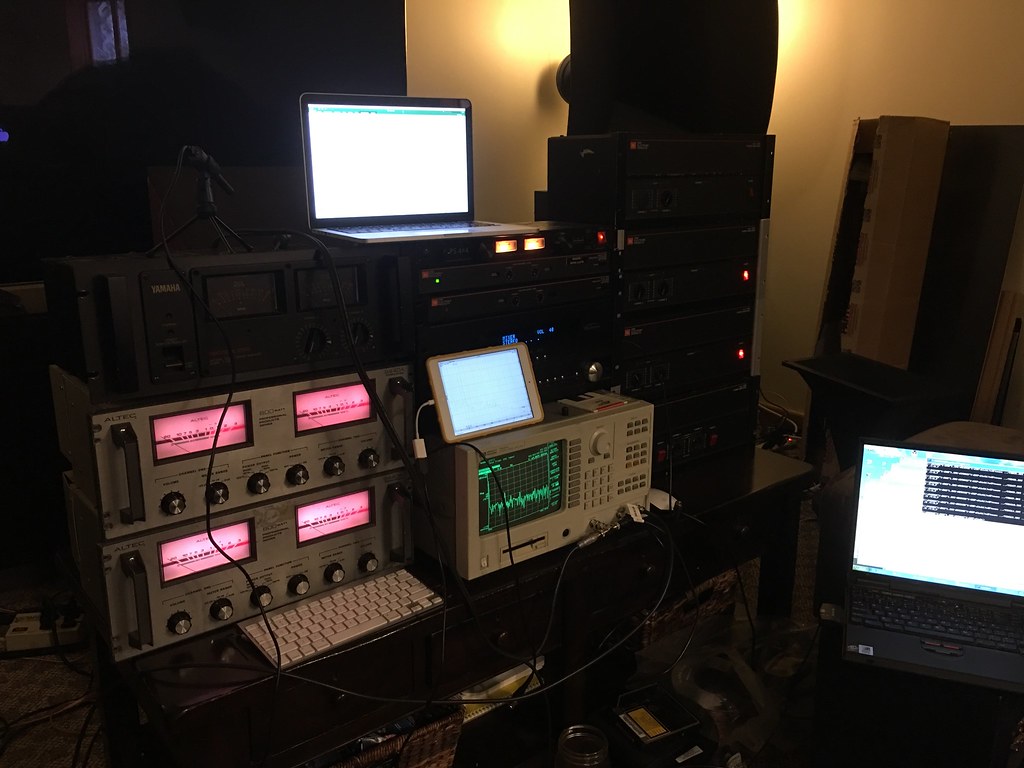
Equipment list (will probably not all get used in this setup):
Amps:
2x Altec 1608A (replaced marginal electrolytics, replaced burned output stage / driver resistors on one, debugged flaky driver card instability, most likely staying on the test bench)
2x Altec 9440A (replaced marginal electrolytics, upgraded coupling cap to film, ceramics to film / silver mica)
3x JBL 6260 (repaired flaky relay on one)
1x JBL 6290
1x Yamaha P-2200 (needs repair on intermittent meter, maybe electrolytics)
1x McIntosh MA-230 (replaced failed/marginal electrolytics, diodes, thermistor, modified for pre-out and post-in, still needs some cleanup, likely going to upstairs vintage system)
1x HK AVR7000 (failed input card, modified for 5ch power amp, needs PS cap replacement, moving out to backup status)
Speakers:
2x JBL 4648A w/dual 2226H 15" drivers
4x JBL 2446H w/ 2365A CC biradial horns & 2x 2506B brackets
2x JBL 2404H tweeters
2x JBL 8330 surrounds
1x JBL 4660 w/2346 "everest" defined coverage horn
1x JBL 4646A (previous center LF, likely moving to 4660)
1x JBL 2446H w/2380A FF horn (previous center HF, likely moving to 4660)
1x Intersonics ServoDrive Contrabass (made belt set, replaced bad motor, reglued separated cone/surround)
Sources / Control / Other:
1x Sherbourn PT-7030 - Pre/pro, hdmi switching, bass management, parametric EQ
2x JBL 5235 active crossover, cards 3x 500 CCBREQ, 1x 800 FFBREQ, 1x 80Hz, 1x blank
4x UREI 539 Room EQ
1x UREI 535 Stereo EQ
HDMI sources: Mac Mini (Plex/Itunes), PS3, PS4, WiiU
Media Server: Dell T3500 (CentOS 7), PERC 6/E SAS to MD1000 (16TB RAID 50)
Other sources: Denon DCD 3520, ELAC 50H (needs work), ELAC 750 (now working) - these are now in use in upstairs vintage system w/JBL 4411s
Panasonic P54G10 54" plasma (probably reusing for different room)
Panasonic P65VT50 65" plasma (probably replacing 54" plasma and projector)
Sony VW40 projector, tab tensioned 4:3 draper accessV screen (probably going away)
Test Equipment / Misc:
HP 4192A Impedance Analyzer
HP 35665A Dynamic Signal Analyzer
Tektronix 2465 Analog Oscilloscope
AudioTools iOS w/UMIK-1
GTC CM100 mA scale AC/DC clamp current meter
Fluke 87IV DVM
Misc. Cheap DVMs
Dale 5.8Ohm 200W resistor load
Collection of various vintage/nos caps (rel, wonder, sprague, Siemens, motor start/runs, silver mica, etc), coils, resistors, magnet wire, diodes, etc
temp controlled solder station (vintage Hexacon)
Various simulators (Cadence Spectre, ADS, Spice, etc)
http://www.audiokarma.org/forums/in...ankenstein-monster-system-on-a-budget.677257/
Brief recap, took the plunge and bought up all the old speakers from a local concert hall when the opportunity came along.

Ended up with a functional and enjoyable setup, but knew it would ultimately be temporary while tracking down the gear required to take it to the next level.

Coming up on two years now of trading, selling, scrounging, and repairing gear, I'm finally starting to assemble the next generation. This will likely involve some experimentation and testing, but excited to be getting started!

Equipment list (will probably not all get used in this setup):
Amps:
2x Altec 1608A (replaced marginal electrolytics, replaced burned output stage / driver resistors on one, debugged flaky driver card instability, most likely staying on the test bench)
2x Altec 9440A (replaced marginal electrolytics, upgraded coupling cap to film, ceramics to film / silver mica)
3x JBL 6260 (repaired flaky relay on one)
1x JBL 6290
1x Yamaha P-2200 (needs repair on intermittent meter, maybe electrolytics)
1x McIntosh MA-230 (replaced failed/marginal electrolytics, diodes, thermistor, modified for pre-out and post-in, still needs some cleanup, likely going to upstairs vintage system)
1x HK AVR7000 (failed input card, modified for 5ch power amp, needs PS cap replacement, moving out to backup status)
Speakers:
2x JBL 4648A w/dual 2226H 15" drivers
4x JBL 2446H w/ 2365A CC biradial horns & 2x 2506B brackets
2x JBL 2404H tweeters
2x JBL 8330 surrounds
1x JBL 4660 w/2346 "everest" defined coverage horn
1x JBL 4646A (previous center LF, likely moving to 4660)
1x JBL 2446H w/2380A FF horn (previous center HF, likely moving to 4660)
1x Intersonics ServoDrive Contrabass (made belt set, replaced bad motor, reglued separated cone/surround)
Sources / Control / Other:
1x Sherbourn PT-7030 - Pre/pro, hdmi switching, bass management, parametric EQ
2x JBL 5235 active crossover, cards 3x 500 CCBREQ, 1x 800 FFBREQ, 1x 80Hz, 1x blank
4x UREI 539 Room EQ
1x UREI 535 Stereo EQ
HDMI sources: Mac Mini (Plex/Itunes), PS3, PS4, WiiU
Media Server: Dell T3500 (CentOS 7), PERC 6/E SAS to MD1000 (16TB RAID 50)
Other sources: Denon DCD 3520, ELAC 50H (needs work), ELAC 750 (now working) - these are now in use in upstairs vintage system w/JBL 4411s
Panasonic P54G10 54" plasma (probably reusing for different room)
Panasonic P65VT50 65" plasma (probably replacing 54" plasma and projector)
Sony VW40 projector, tab tensioned 4:3 draper accessV screen (probably going away)
Test Equipment / Misc:
HP 4192A Impedance Analyzer
HP 35665A Dynamic Signal Analyzer
Tektronix 2465 Analog Oscilloscope
AudioTools iOS w/UMIK-1
GTC CM100 mA scale AC/DC clamp current meter
Fluke 87IV DVM
Misc. Cheap DVMs
Dale 5.8Ohm 200W resistor load
Collection of various vintage/nos caps (rel, wonder, sprague, Siemens, motor start/runs, silver mica, etc), coils, resistors, magnet wire, diodes, etc
temp controlled solder station (vintage Hexacon)
Various simulators (Cadence Spectre, ADS, Spice, etc)


